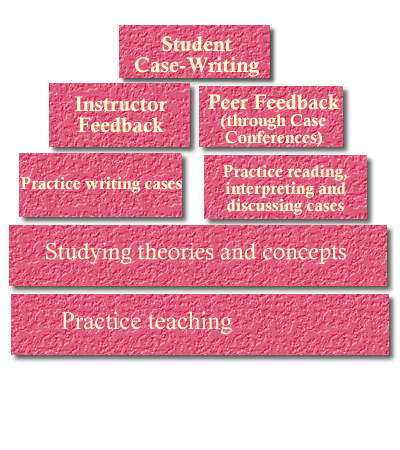|
As the course syllabus describes, work on cases is woven throughout the course. The diagram below illustrates the six ways we support students' case-writing. First, students' own personal teaching experiences serve as key foundation material for their case assignment, and as they are engaged in teaching throughout the case-writing they have further opportunities to reflect upon their current practice. Second, throughout the
course students are reading, evaluating, and discussing key concepts in learning theory, concepts which they are then asked to use in analyzing and interpreting their cases. We saw the embedding of case-writing within a context of reading theory as particularly critical to the development of powerful cases. Third, students have opportunities to read, discuss and interpret others' cases as well as work on the development of their own case. For instance, course readings include cases by educational scholars such as Deborah Ball as well as cases authored by teachers (some of whom are former STEP students) such as Mark Ellis, Michelle Phillips and Vicky White. Discussions and critiques of such cases are part of the curriculum. Fourth, students are also working on their own cases through an extensive revision process. As depicted above, early in the course, students select a case-worthy topic, submit a "case outline," and prepare several drafts of their case. Fifth, extensive feedback, using a publicly developed and shared rubric, is provided by section leaders for every version of the case, from
outline to final piece. Finally, in order to obtain diverse perspectives, and engage in a community of case-writers, students also participate in two "case conferences" in which they present their cases, receive feedback and discuss alternative interpretations of the cases. . 
|

